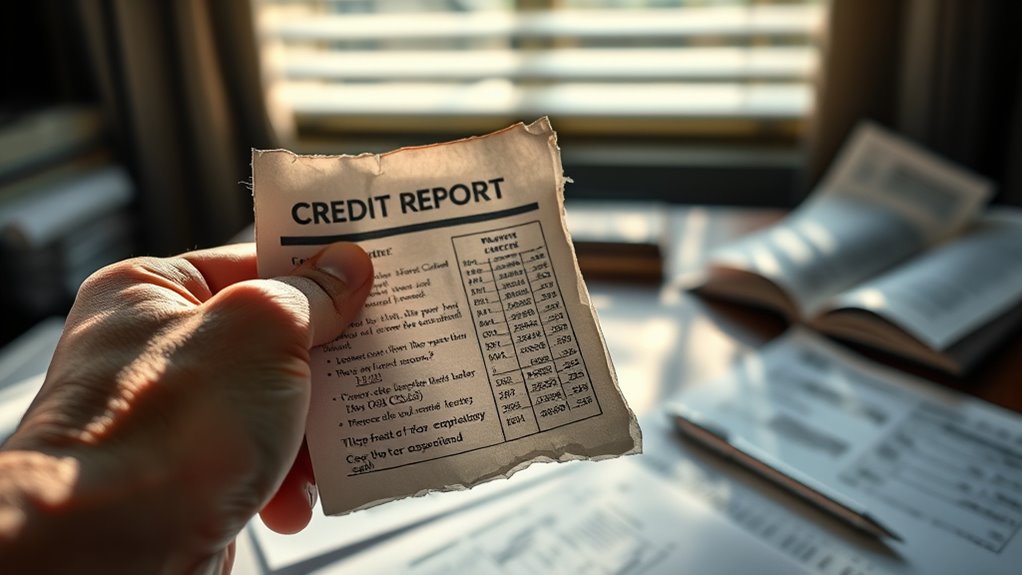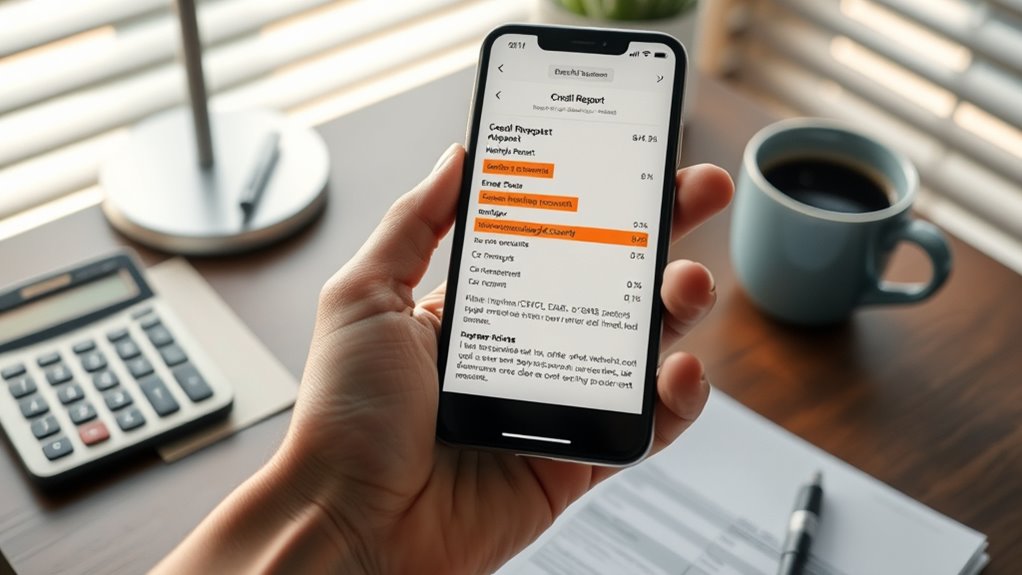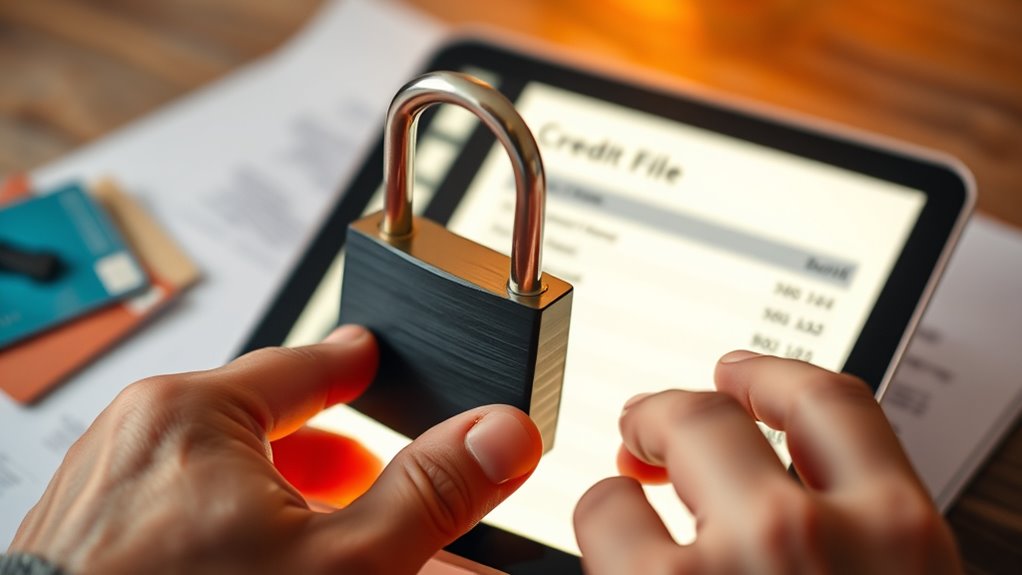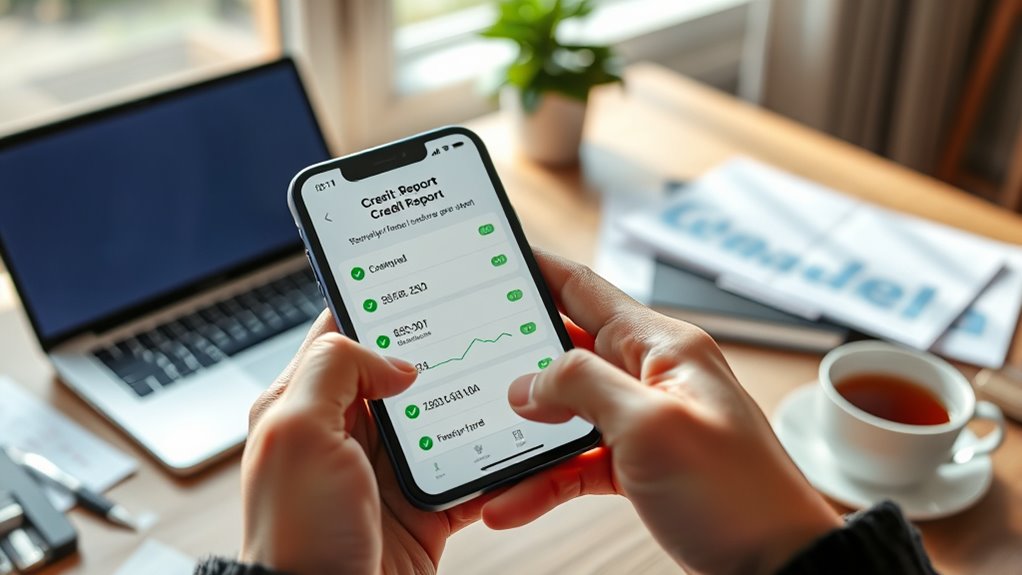To rebuild your credit after financial abuse by a narcissist, start by gathering evidence of fraudulent accounts and coerced debt. Dispute inaccuracies with credit bureaus, request credit freezes, and monitor your reports regularly. Consider legal options to address unresolved debts, and work on establishing a positive financial history with secured credit cards, payments, and responsible credit use. Staying vigilant and seeking support can help you regain control; explore further steps to restore your financial stability.
Key Takeaways
- Obtain and review your credit reports from all three bureaus to identify and dispute fraudulent or unauthorized accounts.
- Implement a credit freeze or fraud alert to prevent further unauthorized access and monitor for suspicious activity.
- Seek legal guidance to address and potentially nullify coerced debts resulting from financial abuse.
- Work with trauma-informed professionals to rebuild confidence, develop financial skills, and create a recovery plan.
- Establish new, positive credit accounts gradually, ensuring all debts are managed responsibly to improve your credit score.
Recognizing the Impact of Financial Abuse on Your Credit

Financial abuse can severely damage your credit, often in ways you might not immediately realize. Women of color face nearly double the average debt, making financial instability more common. Also, about 73% of survivors report that essential financial information was withheld from them, leaving them unaware of their true financial situation. Abusers often open accounts in your name without your knowledge, forcing you to sign documents under duress. Coerced debt is frequent; survivors typically carry debt averaging around £4,588.23, and half are pushed into credit cards or loans against their will. Recognizing these signs helps you understand how financial control erodes your creditworthiness, making future recovery and independence more challenging. Research indicates that coerced debt can be hidden from victims during and after relationships, further complicating efforts to rebuild credit. Additionally, understanding the impact of financial abuse can empower survivors to seek appropriate support and resources to restore their financial health. Educating yourself about financial literacy is also crucial, as it helps in identifying and preventing further exploitation. Developing a clear understanding of credit reporting processes can aid in detecting unauthorized accounts and discrepancies on your credit report, which are common consequences of financial abuse. Being aware of credit monitoring tools can also help in quickly identifying suspicious activity.
Gathering Evidence of Coerced Debt and Fraud

After recognizing how financial abuse can undermine your credit, the next step is collecting strong evidence of coerced debt and fraud. Start by filing an FTC identity theft report at [idtheft.gov](https://www.identitytheft.gov/) and submit it to the police, requesting multiple copies of reports for creditors and bureaus. If safety is a concern, report online or by phone. Gather financial records such as bank statements showing unauthorized transactions, billing statements detailing coerced debt, and credit reports highlighting fraudulent accounts. Secure copies of checks and application forms. Collect supporting documentation like letters from counselors, medical records, restraining orders, or court declarations that prove coercion. These records build a solid foundation to challenge fraudulent debts and protect your credit recovery process. Developing clear evidence of coercion can strengthen your case in disputes and legal actions. Legal guidance can help you understand the best way to present this evidence in disputes and legal actions. Additionally, understanding financial abuse dynamics can help you identify other forms of coercion that may impact your credit recovery efforts.
Disputing Errors and Unauthorized Accounts With Credit Bureaus

How can errors and unauthorized accounts be effectively disputed with credit bureaus? Start by identifying inaccuracies like late payments, incorrect balances, closed accounts listed as open, unauthorized accounts linked to identity theft, or unrecognized inquiries. Then, follow these steps:
Dispute credit errors and unauthorized accounts by identifying inaccuracies and following proper correction procedures.
- Submit disputes online for simple errors or via certified mail with detailed explanations and account info.
- Contact creditors directly to clarify or correct mistakes, especially for identity theft issues.
- Gather supporting documents such as bank statements, police reports, or identity theft claims to strengthen your case. Dispute processes can be initiated through various methods, including online, mail, or phone, depending on the nature of the dispute. Additionally, understanding credit reporting practices can help you navigate the process more effectively. Being familiar with automated dispute systems can speed up resolution times and improve accuracy. Moreover, staying informed about credit bureau procedures can help you respond promptly and effectively to any updates or requests during the investigation process. Knowing how to interpret credit report updates can also empower you to verify that corrections have been properly made. The bureau typically responds within 30-45 days, and updates may take up to two billing cycles. After investigation, you receive written confirmation and updated reports, ensuring your credit profile accurately reflects your current financial situation.
Freezing and Securing Your Credit Files

Securing your credit files by freezing your credit reports is a proactive way to prevent unauthorized access and protect yourself from identity theft. To do this, contact all three credit bureaus—Equifax, Experian, and TransUnion—separately and request a freeze. You can do this online, by phone, or by mail, with online and mobile methods offering the fastest processing—usually within minutes. Be prepared to provide personal identifiers, such as your full name, SSN, date of birth, and a government-issued ID. Keep copies of your documentation securely stored. Freezing your credit blocks both fraudulent and legitimate requests, suspending all credit checks. You can manage and lift these freezes temporarily or permanently through online portals or phone, often instantly. Regularly monitor your reports after freezing for unauthorized activity. Implementing a credit freeze can significantly reduce the risk of new accounts being opened fraudulently in your name. Additionally, understanding the filtration systems in your credit monitoring tools can help detect suspicious activity more effectively. Incorporating automated testing tools into your credit monitoring process can further enhance detection of fraudulent activities.
Exploring Legal Options for Debt Dissolution and Protection Orders

Legal options can help you challenge or dissolve debts caused by abuse or fraud, giving you a fresh start. You might use court orders to nullify coerced debts or seek protection from ongoing financial harassment. Understanding these pathways empowers you to take control and rebuild your credit securely. Legal interventions can also assist in recovering assets that were hidden or misappropriated during the abusive relationship. Additionally, consulting with a local legal expert familiar with regional laws can improve your chances of a successful resolution. Recognizing financial deception and addressing it through legal channels is essential for a comprehensive recovery. Engaging with professionals knowledgeable about emotional support can further help you navigate the emotional aftermath of financial abuse. Knowing your rights and protections is crucial in preventing further exploitation and ensuring a safer financial future.
Legal Pathways for Debt Relief
Exploring debt relief through legal channels offers essential options for individuals facing financial abuse or fraud-related debt. Over half of survivors (52%) report debt via fraud or coercion, with 22% mentioning fraudulent transactions. Many stay in abusive relationships longer—73%—due to debt concerns. Legal pathways can help you challenge unjust debts and protect your finances:
- Disputing fraudulent transactions – Use evidence of abuse-related fraud to invalidate debts, supported by laws targeting financial coercion (NDVH, Consumer Protection Agency).
- Consumer rights protections – Seek debt write-offs through laws that address unfair practices or errors, with some cases erasing significant debt (e.g., £234,000 across 24% of cases).
- Civil claims for financial abuse – File claims under domestic violence statutes in jurisdictions that recognize financial coercion as grounds for debt relief, providing a legal shield against ongoing harm.
Court-Ordered Debt Dissolution
Court-ordered debt dissolution offers a formal process for eliminating or reducing debts through judicial intervention. You start by filing motions and affidavits, detailing your debts and any agreed terms. During court hearings, you’ll provide testimony under oath about your assets and income, helping the court assess your financial situation. The court may delegate collection responsibilities to specialized entities or approve discharge if debts are minor. Final judgments can result in writs of execution or levy notices to enforce payment or seize property. Enforcement mechanisms like garnishment or bank levies may follow. Depending on your state, courts can also approve corporate dissolutions or restitution orders, which prioritize victim repayment. Legal processes vary by jurisdiction but serve as a structured way to address debt, offering potential relief and protection. Additionally, understanding the importance of road signs can help you navigate legal procedures safely and efficiently. Incorporating vibrational alignment techniques can further support your efforts to recover financially and emotionally from abusive situations. Being aware of alternative dispute resolution methods can also provide faster and less adversarial options for debt resolution.
Building a Positive Credit History From Scratch

Building a positive credit history from scratch requires strategic steps to establish trust with lenders. Start by using secured credit cards, which need upfront deposits but report your payments to credit bureaus, helping build your credit file. Set up auto-pay to guarantee on-time payments, boosting your score. Keep your credit utilization below 30%, showing responsible spending, and choose cards with low limits to stay manageable. Establishing a credit score typically takes 3-6 months of regular activity, so patience is essential during the initial stages of credit rebuilding. You can also become an authorized user on a trusted person’s account, piggybacking on their good payment history. Alternatively, credit-builder loans and reporting services for rent and utilities help establish a track record. Building a sustainable credit profile involves consistent, responsible use, and monitoring your progress are key to rebuilding from scratch. Additionally, understanding credit report accuracy and regularly checking your credit reports can help identify errors or fraudulent activity that may hinder your progress. Incorporating financial literacy into your routine can further empower you to make informed decisions about your credit, and staying informed about credit scoring models helps you understand how your financial behavior impacts your score.
Monitoring and Maintaining Your Credit Reports Post-Abuse

You need to regularly check all three major credit reports to catch any unauthorized accounts or suspicious activity. Disputing incorrect or fraudulent entries quickly helps protect your score and prevent further damage. By staying vigilant, you can better guard against future fraud and maintain control over your credit. Recognizing credit-related abuse is essential in identifying if all debts are in your name and detecting signs of coercion or manipulation. Monitoring your credit reports also allows you to spot identity theft early and take swift action to minimize impact.
Regular Report Checks
How often should you check your credit reports after experiencing financial abuse? Regularly monitoring your reports is essential for catching errors, unauthorized accounts, or signs of ongoing coercion. Initially, aim for monthly checks to stay proactive during your recovery. As you gain stability, quarterly reviews help track progress and identify trends. Also, conduct event-driven reviews after applying for credit or suspecting identity theft to ensure accuracy. Regular report checks are crucial because they help detect potential fraud or inaccuracies early, preventing long-term damage. To make these checks manageable, consider these steps: 1. Use free services like Experian or TransUnion for daily alerts about new accounts or inquiries. 2. Access your unlimited TransUnion reports to spot errors or fraudulent accounts. 3. Set customized notifications for unusual credit activity or address changes to detect misuse early. Staying vigilant helps protect your financial healing journey.
Dispute Unauthorized Entries
After regularly checking your credit reports, the next step is to actively contest any unauthorized entries. Look for accounts or debts you didn’t authorize or recognize, especially those linked to the abuser. Submit written disputes to each credit bureau, including proof of your identity and evidence of coercion or abuse, such as police reports or affidavits. Request a freeze or identity theft block to prevent new fraudulent accounts. If you find inaccuracies like misrepresented debt or incorrect addresses, challenge them immediately. Keep copies of all correspondence and supporting documents. Tracking dispute timelines ensures you follow up within 30 to 45 days. Unauthorized financial activity, such as accounts opened in your name without your consent, is common in cases of financial abuse and must be addressed promptly. Disputing unauthorized entries helps clean your credit report and lays the foundation for rebuilding your financial life after abuse.
Protect Against Future Fraud
Ever wonder how to stay one step ahead of identity theft and fraud after experiencing abuse? You can protect yourself by actively monitoring and maintaining your credit reports. Start by setting up fraud alerts—initial or extended—to prompt identity verification on new credit applications. Next, apply security freezes or credit report locks to restrict access, requiring your approval before any new accounts open. Additionally, enable device and IP monitoring to detect suspicious login attempts from unrecognized locations. Regularly review your credit reports for unusual activity, like unfamiliar accounts or inquiries. Keep an eye on transaction patterns and account permissions for signs of tampering. Using these tools helps you stay vigilant, safeguard your financial future, and rebuild confidence after abuse. Continuous monitoring is essential because fraud detection & prevention markets are expanding, helping you respond quickly to potential threats and prevent further damage.
Navigating Systemic Barriers and Discrimination in Lending

Managing systemic barriers and discrimination in lending requires recognizing that traditional credit metrics often fail to reflect the true financial potential of minority borrowers. Credit scores, debt-to-income ratios, and loan-to-value ratios tend to disadvantage racial and ethnic minorities due to underlying systemic inequities. Even with identical financial profiles, Black applicants face higher denial rates in automated systems, highlighting unobserved biases. Disparities in interest rates remain unexplained by risk factors alone, signaling pricing biases. Automated underwriting systems often reinforce these gaps by relying on metrics linked to systemic inequities. Minority-owned businesses face higher interest rates and stricter collateral requirements, limiting growth opportunities. Disparities in mortgage pricing and access are influenced by broader societal factors beyond individual creditworthiness, which underscores the importance of addressing these systemic biases and regulatory gaps. Without addressing these structural biases and regulatory gaps, rebuilding your credit remains an uphill battle, compounded by broader systemic challenges.
Connecting With Support Networks and Financial Resources

Connecting with support networks and financial resources can provide essential guidance and encouragement as you rebuild your credit. Support groups, peer networks, and professional assistance offer valuable advice and emotional backing. Exploring legal and community resources can also help you access the help you need to regain financial stability. Understanding financial abuse can empower you to recognize the signs and take appropriate steps toward recovery, making these connections even more vital.
Support Groups and Peer Networks
Support groups and peer networks play a pivotal role in your journey to rebuild your credit score by offering a safe space to share experiences, strategies, and resources. These groups help you feel understood and less isolated as you navigate recovery. Through moderated online platforms like Circles, you can connect anonymously, share milestones, and get practical advice from others who’ve faced similar challenges. Facilitators trained in trauma-informed methods guide discussions, helping you recognize financial manipulation and rebuild trust. Additionally, resources like podcasts and workshops teach you credit basics and negotiation skills. Peer networks foster encouragement, validate your experiences, and reduce guilt. Connecting with others who understand your journey empowers you to take control of your financial future confidently. Support groups provide ongoing emotional and practical support, which is essential for overcoming the effects of financial abuse and making steady progress toward financial independence.
Professional Financial Assistance Options
Rebuilding your credit score often requires more than just peer support; it involves leveraging professional financial assistance and accessing valuable resources. You can apply for government programs like TANF or emergency aid to cover basic expenses during your migration. Local agencies may offer short-term grants or transitional housing funds to help stabilize your living situation. Reach out to nonprofit credit counseling agencies for debt management strategies and credit repair advice. Free online courses and resources from organizations like the Allstate Foundation can improve your financial literacy. Emergency organizations like the Salvation Army provide immediate support for shelter and food. Additionally, workforce development programs and remote work platforms can boost your income. These professional options help create a solid foundation for rebuilding your credit and financial independence. Access to government assistance programs can be a crucial step in stabilizing your financial situation during recovery.
Accessing Legal and Community Resources
Have you explored the legal and community resources available to help you recover from financial abuse? Connecting with support networks and resources can make a big difference. Here’s how you can get started:
- Reach out to advocacy organizations like the National Network to End Domestic Violence (NNEDV), which offers guidance on financial abuse and legal protections.
- Use credit bureaus’ free services to freeze accounts, file disputes, and monitor suspicious activity, helping you regain control.
- Join community workshops or programs through domestic violence shelters that focus on financial literacy, credit rebuilding, and managing coerced debt.
- Monitoring your credit reports regularly can help detect unauthorized activity early and prevent further financial harm.
Leveraging these resources can help you challenge abusive financial patterns and rebuild your financial independence confidently.
Establishing Long-Term Financial Stability and Resilience

Establishing long-term financial stability and resilience requires you to develop a thorough plan that addresses past setbacks and prepares you for future challenges. Start by working with trauma-informed coaches and therapists to rebuild your confidence and challenge unhealthy beliefs about money. Seek legal advice to resolve unresolved debts or fraudulent accounts, and surround yourself with trusted support networks, including survivor communities and financial educators. Manage your debt by documenting everything, prioritizing essential bills, and negotiating repayment plans. Use credit monitoring tools and secured credit cards to rebuild your credit score responsibly. Protect yourself with legal safeguards like asset separation and fraud alerts. Understanding the importance of financial education and focusing on emotional healing through trauma-informed exercises, ensuring you establish a resilient financial foundation for the future.
Frequently Asked Questions
How Can I Rebuild My Credit if I Have No Credit History After Abuse?
If you have no credit history after abuse, start by applying for a secured credit card or a credit-builder loan. Make all payments on time to establish positive credit. Consider becoming an authorized user on a trusted person’s account, and report any utility or rent payments to build your credit profile. Regularly monitor your reports for accuracy and fraud, building your history gradually through responsible financial habits.
Are There Specific Credit Repair Programs for Survivors of Financial Coercion?
Yes, there are specific credit repair programs for survivors of financial coercion. You can access programs like NNEDV’s Independence Program, which offers microloans with 0% interest to help you build credit. Additionally, legal clinics under the Debt Bondage Repair Act provide free assistance to correct adverse credit reports linked to trafficking or abuse. These resources are designed to support your financial recovery and help you regain control.
How Long Does It Typically Take to Restore a Damaged Credit Score?
Think of your credit score as a garden that needs time and care to flourish again. Typically, it takes about 6 to 12 months of responsible habits to see noticeable improvements. However, full restoration can take 2 to 5 years, especially if there’s significant damage. By consistently paying bills on time, disputing errors, and avoiding unnecessary inquiries, you gradually rebuild trust with lenders and nurture your financial health.
Can I Remove Coerced Debt From My Credit Report Legally?
Yes, you can legally remove coerced debt from your credit report. Under the FCRA, if you can prove the debt was incurred without your consent, you have the right to dispute it. You should submit a written dispute to the credit bureaus with supporting documentation, like police reports or evidence of coercion. They’re required to investigate within 30 days, and if the debt is verified as unauthorized, it must be removed.
What Steps Should I Take if My Credit Was Damaged During a Shared Account Breakup?
When your credit takes a hit amidst a shared account breakup, you need to act decisively. Start by requesting copies of your credit reports and identifying any lingering joint accounts. Contact creditors to clarify responsibilities, and consider placing fraud alerts if necessary. Focus on paying down remaining debt, building savings, and applying for secured credit. Remember, patience and careful planning help restore your credit health after this challenging chapter.
Conclusion
Rebuilding your credit after financial abuse is tough, but it’s possible. Some believe that the trauma creates a lasting financial imprint, but evidence shows that with persistence, you can restore your financial health. By staying vigilant, seeking support, and taking proactive steps, you can break free from the past’s hold. Remember, your resilience fuels your recovery—your credit score doesn’t define your strength or future.










